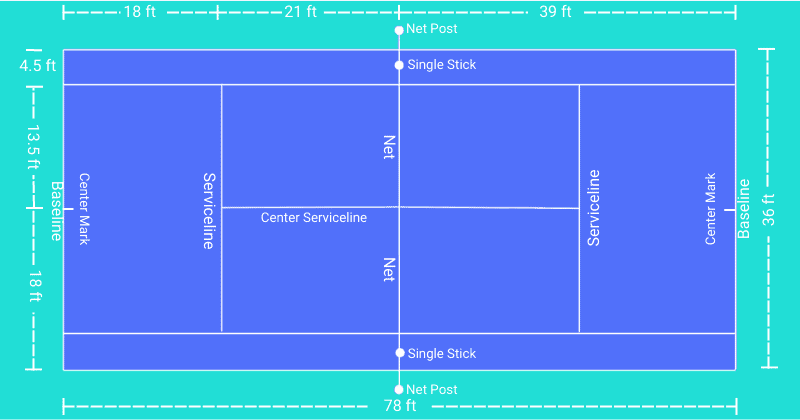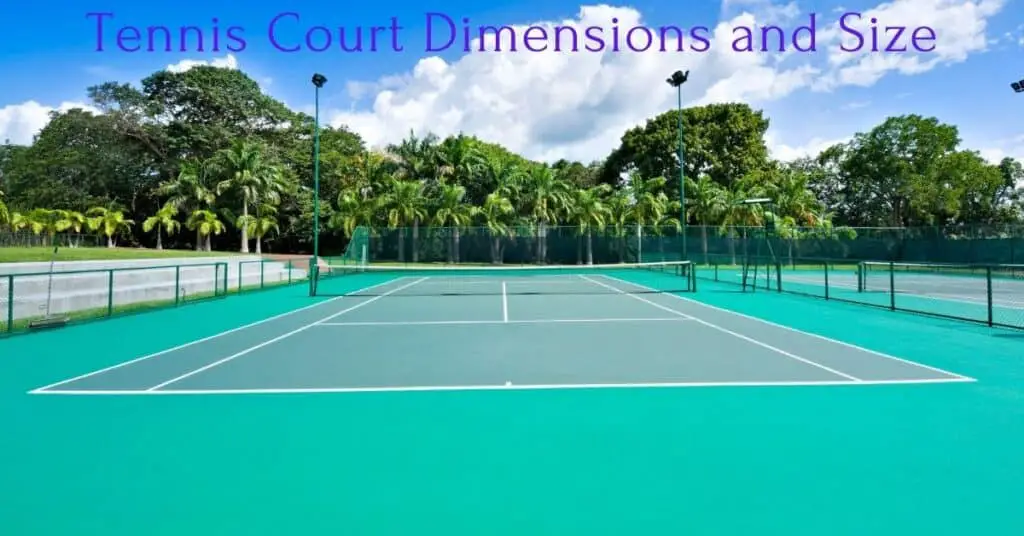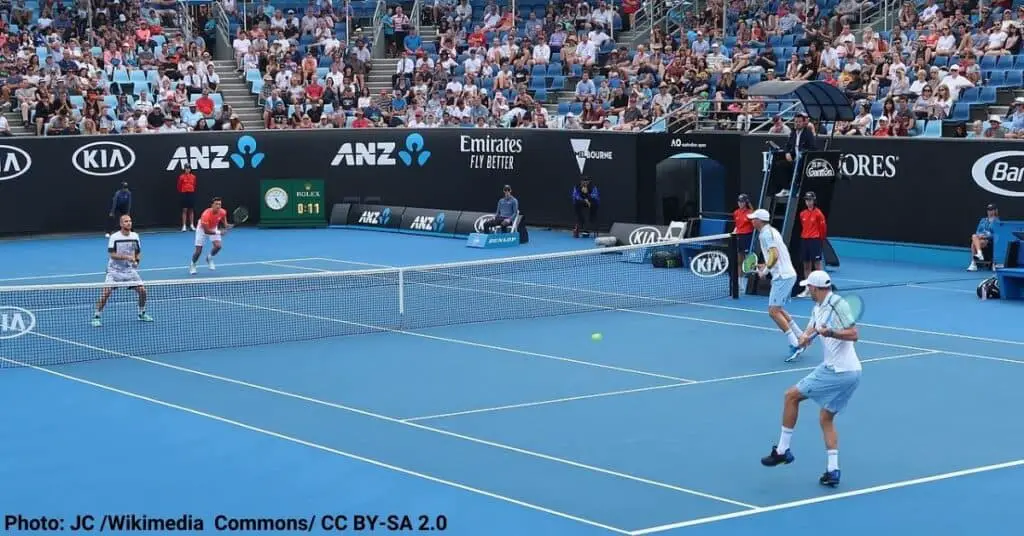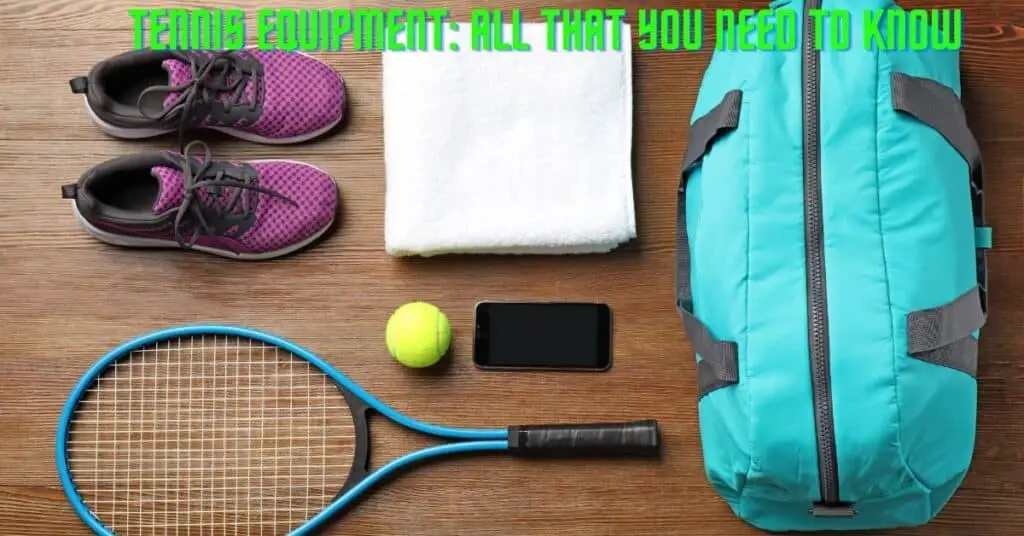Tennis, one of the most popular sports, has grown incredibly since 2005. The epic rivalry between the trio, the legends Roger Federer, Rafael Nadal, and Novak Djokovic attracts attention around the world. Tennis is related to many unique terms, the awareness of which plays an important role in gathering knowledge on this game. Each term defines a specific attribute regarding tennis, like the scoring system, rules, nature of the court, and playing techniques.
Here is my list of the most common 40 tennis terms, defined simply and precisely with a beginner’s friendly approach for easy understanding.
Tennis Terminology: Basic Tennis Terms


Ace: A winning serve that an opponent is unable to return.
Ad-Court: It is the left-side service court.
Advantage: A one-point lead over a 40-40 score is called an “Advantage”. It gives a player the opportunity to win a game by winning the next point.
Alley: It is a rectangular strip along the sides of a court bounded by the singles and doubles sidelines. The term “Alley” is used only for doubles.
ATP: This is a well-known tennis term that stands for the Association of Tennis Professionals, the governing body of men’s professional tennis.
Backcourt: The furthest section of a tennis court, i.e. the area between the service line and baseline.
Backhand: Backhand shots are taken on the non-dominant side of your body. For a one-handed backhand, your dominant hand comes into action with the back side of the palm facing toward the direction of the shot while for two-handed, both of your hands are involved.
Baseline: It is the boundary marking line at each end of a tennis court.
Break Point: “Break Point” is the situation when a returner is one point away from winning a game.
Cross Court: This tennis terminology refers to a shot that goes diagonally to the opposite side of a court.
Deuce: It is the point of equality when the score in a game is 40-40.
Deuce Court: It is the right-side service court.
Double Fault: “Double Fault” refers to two consecutive service errors.
Down The Line: It is a tennis shot that is nearly parallel to the sideline. A good down-the-line tennis shot travels close to the sideline making it difficult to return.
Drop Shot: It is played to place a ball short with the use of backspin or the combination of backspin and sidespin. When the opponent is near the baseline, a good drop shot often results in a point.
Foot Fault: “Foot Fault” is an error that is due to the violation of the rule, “A server must stand behind the baseline while serving”.
Forehand: Forehand strokes are taken on the dominant side of your body. Right-hand players hit forehand strokes using the right hand and arm (left hand and arm for left-handed) with the palm facing toward the direction of the shot.
Game: A game is based on total counts of points.
Game Point: “Game Point” is a terminology in tennis that refers to the situation when any of the players has the opportunity to win the game by winning the next point.
Groundstroke: Groundstrokes may be either forehand or backhand strokes that are hit slightly away from the baseline after the ball bounces on the ground.
Grip: The term, “Grip” represents the proper holding technique of a tennis racket.
Half Volley: “Half Volley” is a tennis shot that is taken just after the ball bounces on the ground.
Let: It is a situation when the server has to serve again. “Let” is called by the umpire if a ball touches the net but lands inside the service box.
Lob: It is an offensive/ defensive shot in tennis to place the ball high and deep enough to the opponent’s side.
Love: A game starts with “Love All” i.e. with a score of 0-0.
Match: A tennis match is usually played with the best of 3 sets or 5 sets.
No Man’s Land: It is an unofficial term that denotes the area between the baseline and the service line.
Point: “Point” is an elementary scoring term that indicates the result of a game. The sequence of “Point” is “0”, “15”, and “40”.
Rally: A rally is an exchange of shots between two players.
Serve: “Serve” is the first shot in a rally. To deliver a valid serve, the server must stand behind the baseline and the first bounce of the ball must be within the diagonally opposite service court. This is one of the most used terminologies in tennis.
Service Box: It is an area of 21’ x 13.5’ within which the ball must bounce for a good service. In each half, there are two service boxes, the right service box, and the left service box.
Service Line: It is a line parallel to the net beyond which the ball must bounce for a valid serve.
Set: A “Set” consists of games and to win a set, a player needs 6 games with a minimum difference of 2 games against his opponent, like 6-2, 3-6, or 6-4. If the set arrives at 6-5, there may be two situations, either the set ends at 7-5 or the result of the set (6-6) is decided by a tie-breaker.
Slice: “Slice” is nothing but backspin or underspin which is a backward rotational movement that slows a ball in the air.
Smash: It is an offensive tennis shot that is played over the head with a downward swing of the racket.
Stance: “Stance” is the readiness before making a shot by placing feet and transferring body weight.
Tie-Break: “Tie-break” is called to decide the fate of a set when the score is tied at 6 games all (6-6).
Topspin: It is the forwarding rotation of a ball that bounces high after hitting the ground. Topspin helps to build consistency in play.
Volley: It is an offensive shot that cuts down the reaction time of a returner by hitting the ball before it bounces on the court.
WTA: Women’s Tennis Association (WTA), the governing body of women’s professional tennis.
Download tennis terms pdf




